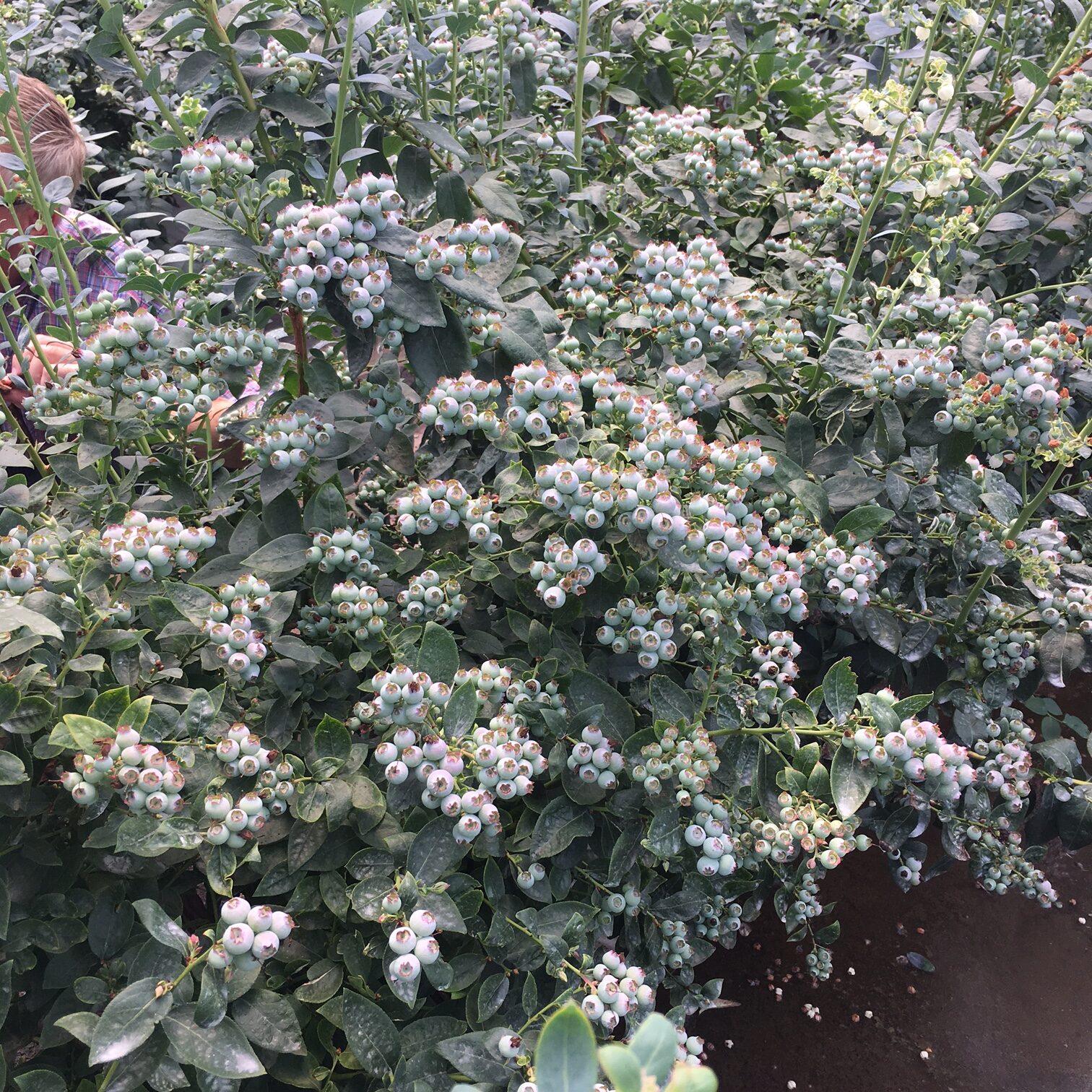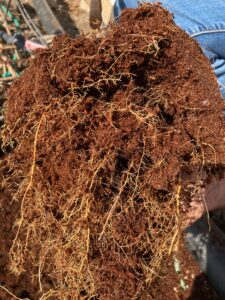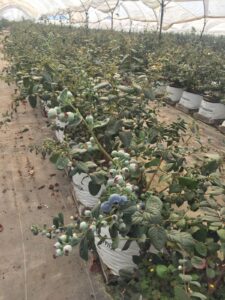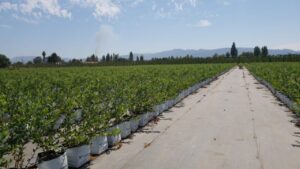Home » Digging deeper: essential substrate knowledge for blueberry growers

As blueberry demand continues to rise, many farmers are considering adding this profitable crop to their farm. While much attention is given to variety selection and trimming management, the hidden half of the plant—the root system—deserves equal consideration. The substrate in which your blueberries grow can make the difference between a thriving crop and a costly disappointment.
Understanding blueberry roots: the foundation of success
Unlike many perennial plants, blueberries have a shallow, branched root system with very thin roots (20-75 micrometers). Approximately 90% of blueberry roots are concentrated in the upper 30cm (¹Valenzuela-Estrada et al. 2008). This specialized root structure lacks the root hairs common in other crops, making blueberries also relatively low in requirements for macro-nutrients (²Hancock and Hanson 2012).
What does this mean for you as a grower? Your substrate decisions are critical.
pH: the master key to nutrient availability
Blueberries thrive in acidic conditions with an optimal pH range of 5.0-5.5 (²Hancock and Hanson 2012; ³Williamson and Lyrene 2004). At these levels, essential nutrients become available for uptake by the plants. When pH rises above 5.5, even in nutrient-rich soil, your blueberries may show signs of deficiency as they simply cannot access what they need due to precipitation of the nutrients (⁴Rengel and Marschner 2012).
Many growers make the costly mistake of adding more or inappropriate fertilizer when plants show deficiency symptoms, when the real issue is pH. Proper substrate selection from the beginning prevents this expensive cycle.
Substrate depth: Respecting root architecture
Since blueberry roots predominantly occupy the top 30cm of substrate, containers or raised beds should provide 30-40cm of growing medium. This depth ensures adequate room for root development while avoiding wasted materials and unnecessary costs. Growers who attempt to economize by using shallower containers often face lack of drainage, stunted growth and reduced yields, ultimately limiting their return on investment.

Drainage: the overlooked essential
Blueberry roots require an organic environment with consistent moisture. A well-draining substrate prevents root rot while maintaining necessary hydration (⁵Darnell et al. 2015). The ideal substrate includes components that create adequate pore space for both water retention and drainage. Proper coarse-to-fine material proportions can achieve this balance. Organic substrates help maintain a low pH and ensure optimal nutrient uptake. Poorly draining substrates lead to oxygen-deprived roots, disease susceptibility, and ultimately, plant failure.
Coco Coir: the organic solution for blueberry success
When selecting a substrate for blueberry cultivation, coco coir stands out as an exceptional organic option. Pelemix coco coir substrate offers the ideal balance of properties that blueberry roots require:

Pelemix coco coir substrates are specifically engineered to provide the optimal environment for shallow-rooted crops like blueberries, with the perfect balance of moisture retention and drainage that these sensitive plants demand.
Fine-Tuning pH through nitrogen management
For experienced growers looking to optimize their substrate conditions, adjusting the ammonium-to-nitrate ratio offers a sophisticated approach to pH management (⁶Tamir et al., 2020). Blueberries prefer ammonium nitrogen, and increasing this form in your fertilization program can help maintain the acidic conditions that blueberries require.
Choosing the right substrate mix: your bottom line depends on it
The substrate you select impacts every aspect of your blueberry operation—from irrigation efficiency to fertilizer requirements, plant health, and ultimately, yield and berry quality.
Investing in the proper substrate from the beginning pays dividends throughout the life of your planting. Consider your substrate decision not as a cost, but as your first and most important investment in your blueberry enterprise.
By understanding and respecting the unique root requirements of blueberries and selecting a premium organic solution like Pelemix coco coir, you position your operation for success from the ground up.
References: